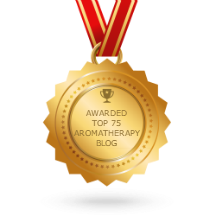Time is an
interesting concept. A person can
consider the length of time passed and be surprised that it has passed quickly,
or lament that the same amount of time seems “so long ago”. For those of us preparing for the second
part of Aromatic Medicine in Atlanta, the two concepts seem to somehow
combine. On the one hand, time is short
when one is scrambling with assignments to make certain that all of the T
crossing and I dotting are done. On the
other, going back and reviewing information that was learned four months ago
seems a life time ago. When adding in
the life events as time marches on, it can be quite overwhelming. None-the-less, the excitement of returning
is palpable, as we look forward to learning more and getting to visit once more
with acquaintances met during the last session that have grown into friendships
over the winter.
When I last wrote
about the Australian oils, there were some that intrigued me that had not yet
made it into Nature’s Gift inventory. I
am excited that Marge has found the opportunity to add yet more from the Land
of Oz. One in particular that she and I
discussed last fall was Nerolina, and I look forward to adding this one to my
collection.
One of the most
common paperbark species of Australia is the Melaleuca quinquenervia (Sweet Tea
Tree). Depending on its geography, the
small tree has 3 chemotypes. Mark Webb,
of Aromamedix and Aromatic Medicine, notes the confusion caused by this, with
resulting varieties being improperly classified and named, often confused with
the Broad Leaved Tea Tree (Melaleuca viridiflora).
The Melaleuca quinquenervia
CT nerolidol/linalool variety is known as Nerolina. Mark has noted that Nerolidol is recognized
in the perfume industry as “floral, green citrus with woody, waxy nuances”. It is a sticky substance that allows it to
adhere well to the skin.
Of course, those of
us in the U.S. will remember that the Australian use of essential oils is on a
level far and above the aromatherapy applications in the states, as they have
come to recognize already the medicinal qualities of aromatics not yet highly understood
here. But, just as it is fun to learn
new cultures, many are interested in learning how essential oils are utilized.
Owing to the high
content of nerolidol and linalool in Nerolina, this sweet tree melaleuca has
gained popularity in Australia, not only for its lovely aroma, but its healing
qualities as well. This
sesquiterpenol/monoterpenol combination creates an antiseptic/anti-inflammatory
powerhouse that is more healing in nature than its antimicrobial relative.
There are many
anecdotal claims to Nerolidol, and scientific experiments are underway to
verify the therapeutic effectiveness of the constituent. One that stands out in particular is in
regard to its effectiveness in relieving pain and inflammation related to
tissue damage in lab mice. It will be
interesting to see how success in the lab situation plays out in clinical
trials.
Meanwhile, in his
book, Aromatica, Peter Holmes
describes the oil as “restoring, calming.”
Mark Webb concurs, noting that he finds that the balance of
nerolidol/linalool is both soothing and uplifting. He describes the oil as “slightly fruity,
floral-green scent of leaves”. Webb warns that he has come across specimens
on the market that has a sour/dirty, unpleasant note to them, and notes that he
has used Nerolina as an effective head lice treatment.
You may read more and order Nerolina Essential Oil here.



No comments:
Post a Comment